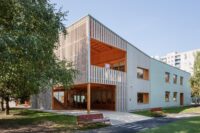- Home
- Articles
- Architectural Portfolio
- Architectral Presentation
- Inspirational Stories
- Architecture News
- Visualization
- BIM Industry
- Facade Design
- Parametric Design
- Career
- Landscape Architecture
- Construction
- Artificial Intelligence
- Sketching
- Design Softwares
- Diagrams
- Writing
- Architectural Tips
- Sustainability
- Courses
- Concept
- Technology
- History & Heritage
- Future of Architecture
- Guides & How-To
- Art & Culture
- Projects
- Interior Design
- Competitions
- Jobs
- Store
- Tools
- More
- Home
- Articles
- Architectural Portfolio
- Architectral Presentation
- Inspirational Stories
- Architecture News
- Visualization
- BIM Industry
- Facade Design
- Parametric Design
- Career
- Landscape Architecture
- Construction
- Artificial Intelligence
- Sketching
- Design Softwares
- Diagrams
- Writing
- Architectural Tips
- Sustainability
- Courses
- Concept
- Technology
- History & Heritage
- Future of Architecture
- Guides & How-To
- Art & Culture
- Projects
- Interior Design
- Competitions
- Jobs
- Store
- Tools
- More
Elevate Your Space: The Importance of Stair Design in Architectural Design
Explore the essential role of stair design in architecture with our in-depth article. Discover how diverse styles—from straight to spiral—enhance both functionality and aesthetics in homes and public spaces. Learn about materials and recent trends, including eco-friendly options, that create visually striking features while ensuring safety and accessibility.

Stairs often serve as the backbone of architectural design, connecting spaces and guiding movement. They do more than just provide access; they can transform a building’s aesthetic and functionality. Whether in a cozy home or a grand public space, the right stair design can elevate the entire experience.
As we explore the world of stair design, we’ll uncover how creativity and practicality come together. From bold, sculptural forms to minimalist approaches, each design choice can impact not just the look but also the flow of a space. Join us as we delve into the various styles and considerations that make staircases a vital element in architecture.

Table of Contents
ToggleImportance Of Stair Design In Architectural Design
Stair design holds significant value in architectural design. Stairs connect multiple levels while enhancing a building’s visual appeal and usability.

Functional Considerations
Stairs serve crucial functional purposes, influencing accessibility and flow within spaces. We design staircases to meet building codes, ensuring safety and compliance. We incorporate handrails and proper riser and tread dimensions to create comfortable navigation. Stairs often become focal points that enhance circulation patterns, promoting efficient movement throughout the structure.
Aesthetic Contributions
Stairs contribute fundamentally to aesthetic appeal in a building. We can utilize various materials like wood, metal, or concrete to create visually striking designs. Shape and form also play vital roles; spiral, floating, or straight designs can evoke different atmospheres. A well-designed staircase can enhance the overall style of a space, whether it’s modern, traditional, or eclectic, making it a memorable architectural feature.
Types Of Stair Designs
Stair designs vary widely, each offering unique functionality and visual appeal. We explore several popular types of stair designs below, highlighting their characteristics and applications.

Straight Stairs
Straight stairs consist of a single, linear flight with no landings. They’re efficient and straightforward, often found in residential and commercial buildings. These stairs provide seamless access between levels and typically feature fewer components, making them easier to build and maintain. Given their simplicity, straight stairs often maximize usable space, allowing for versatile arrangements in any setting.
L-Shaped Stairs
L-shaped stairs incorporate a landing that turns 90 degrees, connecting two perpendicular flights. This design allows for a more compact configuration, ideal for spaces with limited room. L-shaped stairs can enhance flow between levels while adding architectural interest. We can customize materials and finishes to complement the overall design, making them suitable for various aesthetics, from traditional to contemporary.
Spiral Stairs
Spiral stairs consist of a central column with steps winding around it. These stairs occupy minimal floor space, making them perfect for small areas. We can utilize them as striking focal points or accent features in both residential and commercial spaces. Spiral stairs often incorporate materials such as metal, wood, or glass, allowing for a creative blend of styles while maintaining functionality and safety.
Floating Stairs
Floating stairs create a dramatic effect with treads seemingly suspended in mid-air. This design emphasizes open space and light, contributing to a contemporary look. Floating stairs can use various materials, including wood, glass, and metal, enhancing the architectural dynamism of the interior. Due to their unique design, they require careful engineering to ensure structural integrity while adhering to safety codes.
Each stair design offers unique qualities and applications, enhancing the architectural experience in diverse settings.
Materials Used In Stair Construction
Stair construction utilizes various materials, each offering unique properties that contribute to both functionality and design. Selecting the right material affects durability, aesthetic appeal, and cost-effectiveness in architectural projects.

Wood
Wood adds warmth and elegance to stair design. It offers versatility, supporting various styles from traditional to modern. Common wood types include oak, maple, and walnut, each known for its durability and aesthetic qualities. Wood stairs can be stained or painted to match interior schemes. Maintenance involves periodic sealing or refinishing to sustain appearance over time.
Metal
Metal delivers a contemporary and industrial vibe in stair construction. Steel and aluminum are popular choices due to their strength and durability. Metal can be fabricated into various designs, including intricate railings or cantilevered treads. Finishes such as powder coating or galvanization enhance corrosion resistance. Metal stairs often require less maintenance compared to other materials due to their resilience.
Concrete
Concrete provides unmatched structural integrity in stair design. It supports heavy loads and offers fire resistance, making it suitable for commercial and residential applications. Concrete can be poured or precast, allowing for various shapes and finishes. This material supports high design flexibility, with options for color and texture. Proper sealing improves durability and resistance to wear, ensuring long-lasting performance.
Innovative Trends In Stair Design
Stair design continues to evolve, embracing new trends that emphasize functionality and aesthetics. We explore current innovative trends, including minimalist designs and eco-friendly solutions.

Minimalist Design
Minimalist stair design emphasizes simplicity while maximizing usability and style. We focus on clean lines and unobtrusive elements, creating a seamless integration between stairs and surrounding spaces.
- Floating Stairs: Treads appear to hover, enhancing openness and light. This design showcases structural elements while providing a modern feel.
- Monolithic Steps: Single-piece steps create a bold statement. Their sleek profile and smooth materials facilitate maintenance and add a contemporary touch.
- Glass Railings: Transparent materials allow for unobstructed views and foster a sense of spaciousness. We use glass railings to maintain light and visibility, complementing minimalist aesthetics.
- Neutral Color Schemes: Soft, muted colors promote tranquility and sophistication. We choose shades that harmonize with surrounding decor, emphasizing the staircase’s role in unifying the space.
Eco-Friendly Solutions
Eco-friendly stair design incorporates sustainable materials and energy-efficient practices, reflecting our commitment to environmental responsibility.
- Reclaimed Wood: Using reclaimed wood reduces waste and minimizes environmental impact. The unique character of each piece adds visual interest while promoting sustainability.
- Bamboo: Fast-growing and renewable, bamboo serves as a strong, lightweight alternative. We favor bamboo for its eco-friendly qualities and aesthetic versatility.
- Recyclable Materials: Incorporating metals and plastics that are recyclable helps reduce the carbon footprint. This practice aligns with our commitment to making sustainable design choices.
- Low-VOC Finishes: Utilizing low-VOC paints and sealants improves indoor air quality. We prioritize health and environmental concerns in all aspects of stair design, ensuring a safer space.
These innovative trends in stair design enable us to create functional, visually appealing, and environmentally responsible spaces that resonate with aesthetic values and contemporary lifestyles.
Conclusion
Stair design plays a pivotal role in architectural design, serving both functional and aesthetic purposes. It connects spaces while enhancing the overall visual experience of a building. We recognize that thoughtful stair design can greatly transform residential and commercial environments into seamless flows that encourage movement and accessibility.
Each type of stair design, whether straight, L-shaped, spiral, or floating, contributes unique qualities to the architectural narrative. Efficient space utilization, added architectural interest, and striking focal points cater to varying needs and preferences, enriching the user experience.
Materials used for stair construction directly impact their durability, aesthetic qualities, and maintenance requirements. Wood, metal, and concrete serve diverse stylistic and functional needs, allowing us to achieve specific design goals while ensuring safety and longevity.
Current trends in stair design reflect a commitment to both innovation and sustainability. Minimalist approaches and eco-friendly materials not only enhance the visual appeal but also align with modern values of environmental consciousness. These developments affirm that stair design remains a crucial element in shaping impactful, efficient, and beautiful spaces.
- architectural stair trends
- architectural stairs
- commercial staircases
- contemporary staircase designs
- custom staircases
- elegant staircases
- functional stair design
- interior stair design
- luxury stairs
- modern staircase design
- residential stair design
- space-saving staircases
- spiral staircase design
- stair design
- stair design trends
- staircase aesthetics
- staircase architecture
- staircase construction
- staircase design company
- staircase design ideas
- staircase innovation
- staircase remodeling
- stylish staircases
- unique stair designs
Submit your architectural projects
Follow these steps for submission your project. Submission FormLatest Posts
10 Interesting Facts About Zaha Hadid
Zaha Hadid was a visionary architect whose fluid forms, bold experimentation, and...
Online 3D Terrain Mapping Tools for Urban and Landscape Design in 2025
A curated guide to the best online 3D terrain mapping tools in...
Common Emergency Repairs Every Homeowner Should Be Ready For
For most of us, when something goes wrong, we have a propensity...
Designing, Retrofitting, and Valuing Non-Standard Homes in Britain
Britain’s housing stock carries a quiet contradiction. From the street, many homes...












Leave a comment